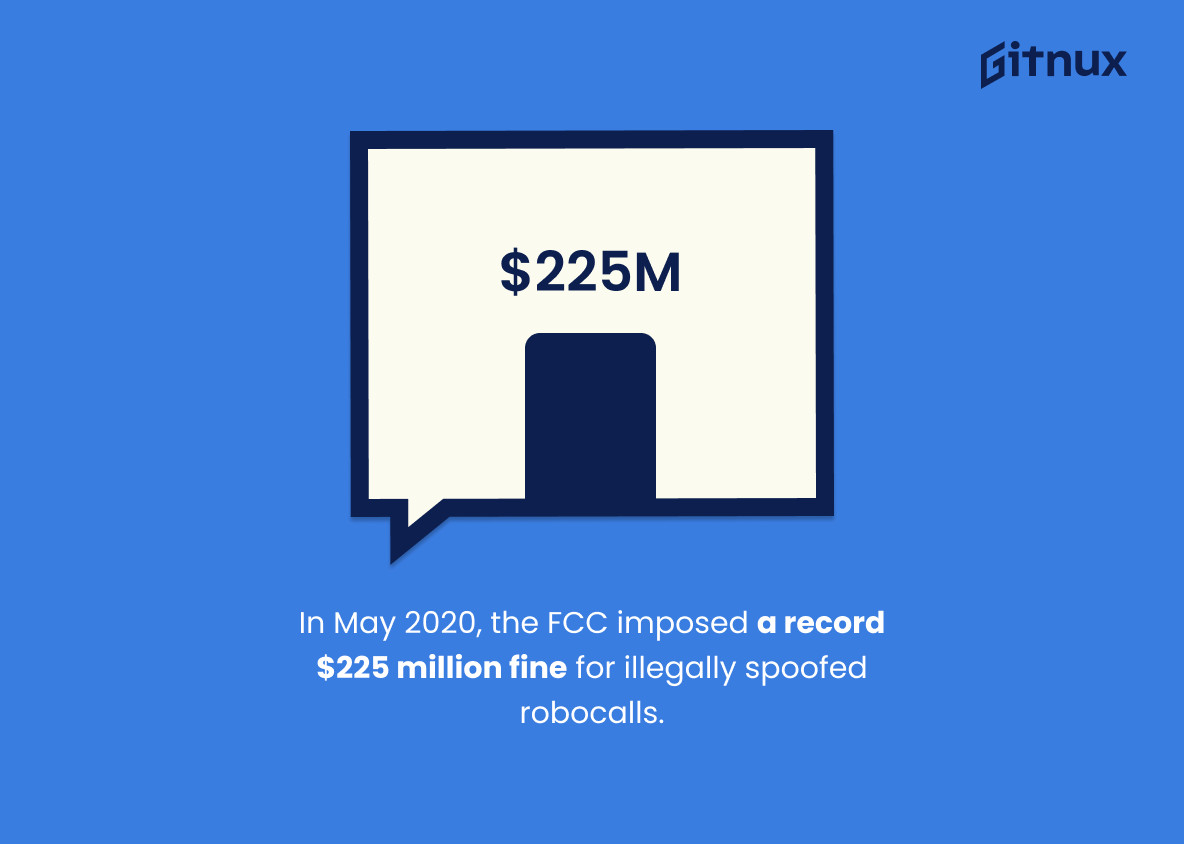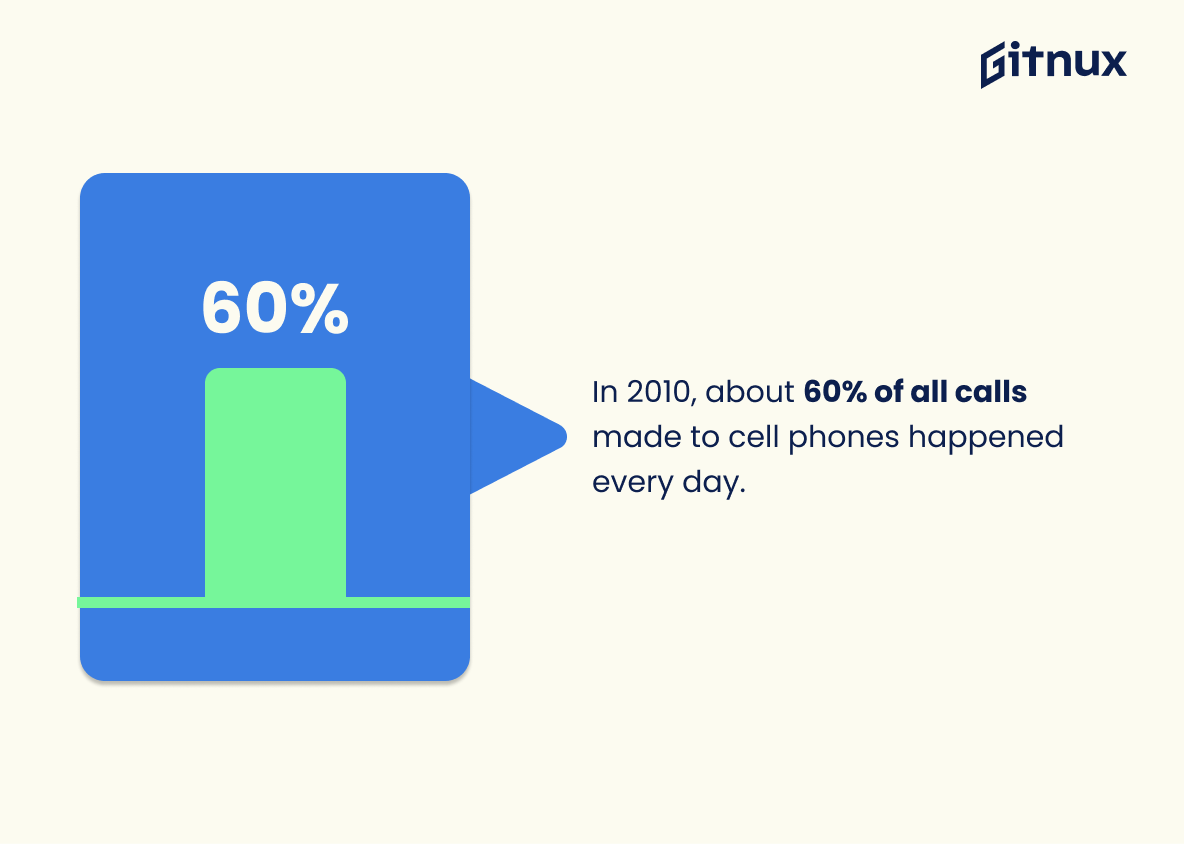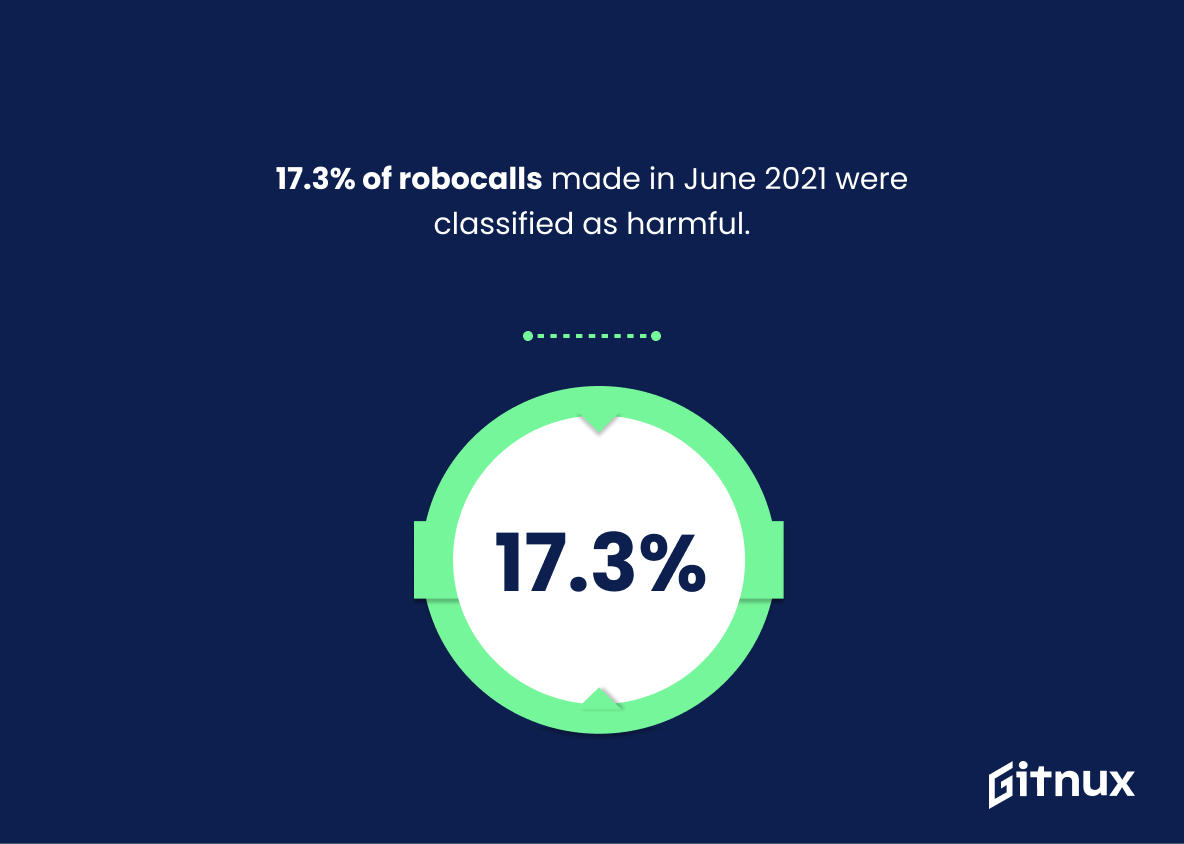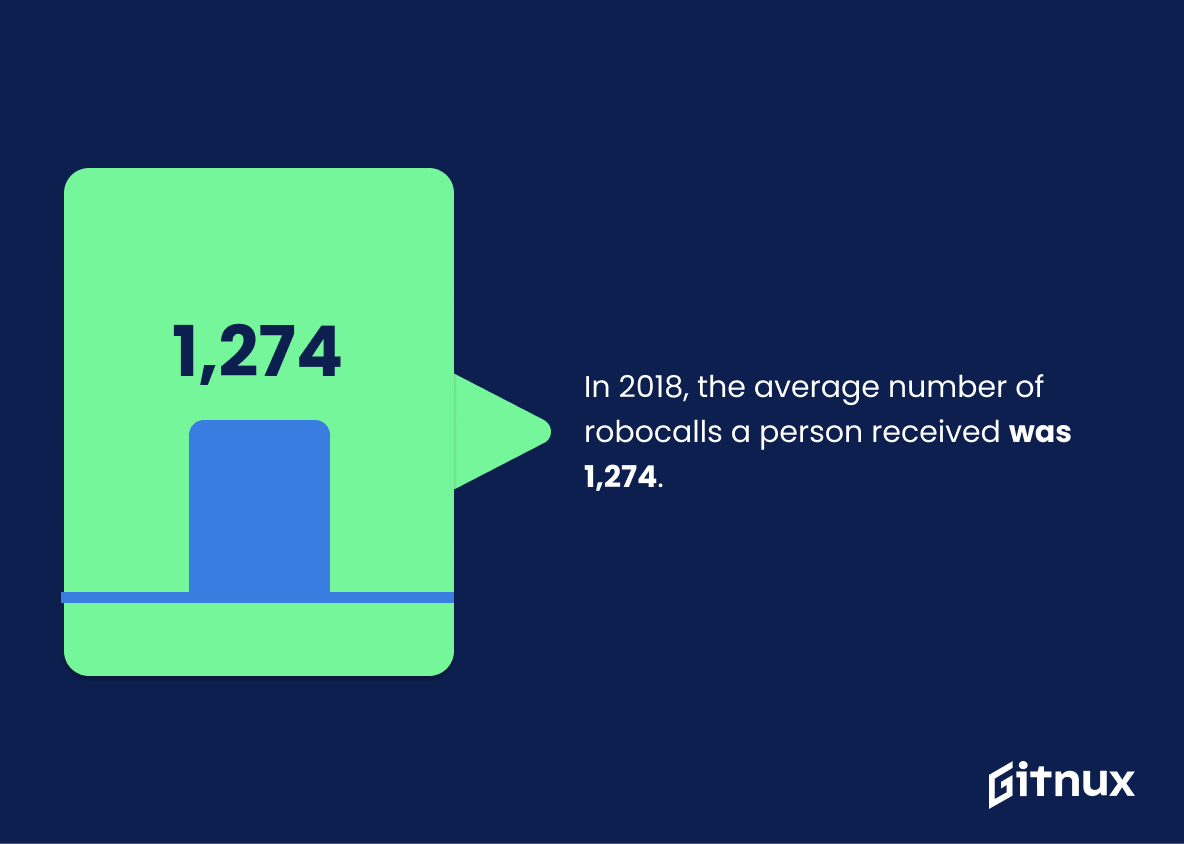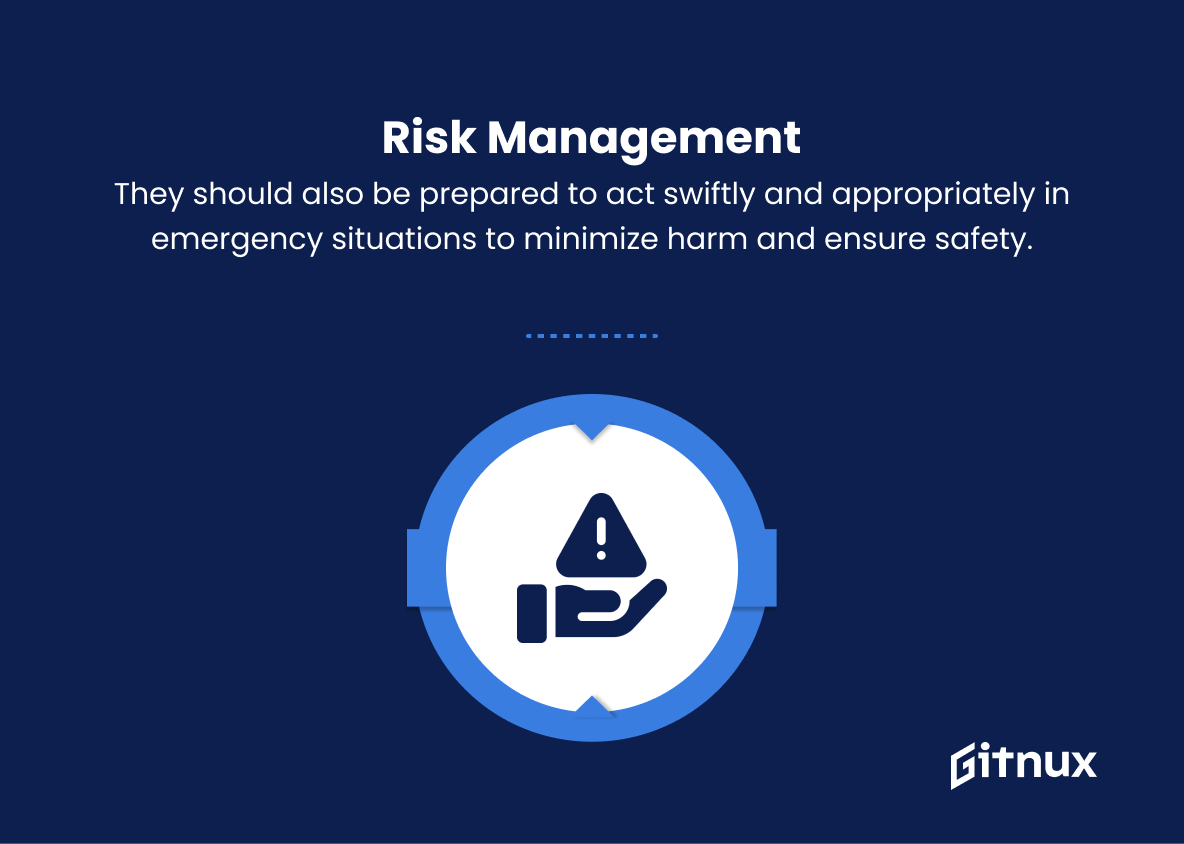Robocalls have become an increasingly pervasive problem in the United States. In September 2021 alone, U.S. consumers received 4.9 billion robocalls according to YouMail’s Robocall Index – and that number is only increasing year after year with 46 billion robocalls placed in 2020 across the country. Over 60% of complaints to the Federal Communications Commission (FCC) mention unwanted robocalls, while 3.78 million reports were made to the FTC regarding these calls in 2019 alone – making it clear just how much of a nuisance they are for many people today.
To make matters worse, Texas was reported as being the most-robocalled state last year with over 615 billion calls placed there; warranty scams also topped off at 27 percent of all types of robocallls this past month according to YouMail’s index report – followed by Social Security impostor calls which had 370 thousand reports filed against them back in 2020. The FCC even imposed a record $225 million fine on illegal spoofed callers earlier this May too…and if that wasn’t enough already, Americans lost around 19 point 7 billion dollars due solely from unwanted robo-calls last year.
It doesn’t stop there either: Atlanta Georgia was named as having 396 million incoming robo-cals during August 2020; 65 percent or more are considered scam/telemarketing related; 17 point three percent were classified as harmful come June 2021.not forgetting financial services account for 40% legal ones sent out each day here within America too. And finally 58%, yes fifty eight per cent.,of all US based RoboCals made during January 2021 turned out be fraudulent attempts at stealing money or personal information from unsuspecting victims..with 96 point three millions such phone messages delivered daily throughout our nation right now..
Clearly then something needs done about this growing issue before it gets any further out hand than what we’re seeing currently..
Robocall Statistics Overview
Social Security impostor calls were the top scam reported in the U.S. in 2020, with 370,000 reports.
This statistic is a stark reminder of the prevalence of social security impostor calls in 2020, with over 370,000 reports. It serves as a powerful illustration of the need to stay vigilant against robocalls and other scams, and highlights the importance of staying informed about the latest trends in robocall statistics.
In May 2020, the FCC imposed a record $225 million fine for illegally spoofed robocalls.
This statistic serves as a powerful reminder of the consequences of illegally spoofed robocalls. The hefty fine imposed by the FCC in May 2020 is a clear indication that such practices will not be tolerated and that those who engage in them will be held accountable. This serves as a warning to those who may be considering engaging in such activities, and it also serves as a reminder of the importance of taking steps to protect oneself from robocalls.
Approximately 65% of robocalls are scams or unwanted telemarketing.
This statistic is a stark reminder of the prevalence of robocalls that are scams or unwanted telemarketing. It highlights the need for individuals to be aware of the potential risks associated with robocalls and to take steps to protect themselves from becoming a victim of a scam. It also serves as a warning to businesses to be vigilant in their efforts to protect their customers from these types of calls.
In 2010, about 60% of all calls made to cell phones happened every day.
This statistic is a telling indication of the prevalence of robocalls in our daily lives. It shows that a majority of calls made to cell phones are robocalls, and that this is a problem that needs to be addressed.
17.3% of robocalls made in June 2021 were classified as harmful.
This statistic is a stark reminder of the prevalence of harmful robocalls in June 2021. It highlights the need for continued vigilance and proactive measures to protect consumers from these intrusive and potentially dangerous calls. It also serves as a warning to those who may be unaware of the risks associated with robocalls, and the importance of taking steps to protect themselves.
In January 2021, 58% of all robocalls in the U.S. were scams.
This statistic is a stark reminder of the prevalence of robocall scams in the U.S. It highlights the need for individuals to be vigilant and aware of the potential risks associated with robocalls. It also serves as a warning to businesses and organizations to take steps to protect their customers from these scams.
In 2020, 44.6% of phone calls in the U.S. were robocalls.
This statistic is a stark reminder of the prevalence of robocalls in the U.S. today. It highlights the need for individuals to be aware of the potential for robocalls and to take steps to protect themselves from them. It also serves as a call to action for businesses and organizations to take steps to reduce the number of robocalls they make.
The FCC adopted new rules in 2019, allowing phone companies to block robocalls by default.
This statistic is a game-changer in the fight against robocalls. By allowing phone companies to block robocalls by default, the FCC has taken a major step towards curbing the nuisance of robocalls. This is a significant development that will have a positive impact on the lives of many people who have been plagued by these unwanted calls.
In 2018, the average number of robocalls a person received was 1,274.
This statistic serves as a stark reminder of the prevalence of robocalls in our lives. It paints a picture of the sheer volume of these automated calls that we receive on a daily basis, and the impact that they have on our lives. It is a powerful illustration of the need to take action against robocalls and to protect ourselves from their intrusive nature.
Conclusion
Robocalls are a growing problem in the United States, with billions of calls placed each year and millions of reports to the Federal Communications Commission (FCC) and Federal Trade Commission (FTC). The most recent statistics show that U.S. consumers received 4.9 billion robocalls in September 2021, while over 60% of complaints to the FCC mention unwanted robocalls. In 2020 alone, there were approximately 46 billion robocalls placed in the U.S., resulting in $19.7 billion lost due to scams or telemarketing calls; Texas was also identified as having had more than 6 million such calls during this time period – making it one of the top-robocalled states for 2020 – along with Atlanta being named as one of its cities receiving 396 million such calls last August alone.
The FTC reported 3.78 million reports related to these types of phone scams back in 2019, while Social Security impostor callers topped their list at 370 thousand cases reported throughout 2020 – leading up to an impressive record fine imposed by FCC on illegal spoofed robocallers amounting up to $225 Million dollars earlier this same year. Additionally, 65% percent have been classified as either scam or telemarketing attempts according financial services accounting for 40%, whereas 17% have been deemed harmful overall since June 2021 onwards; not forgetting about 96+million daily average made across all US territories within current calendar year so far…
It is clear from these numbers that something needs be done about curbing down on Robocallls before they become even more pervasive than ever before: whether through new regulations adopted by government agencies like those mentioned above or via technological solutions implemented directly into our phones’ operating systems themselves – we must take action now if we want any chance at stopping them once and for all.
References
0. – https://www.transnexus.com
1. – https://www.www.usatoday.com
2. – https://www.www.consumerreports.org
3. – https://www.www.consumer.ftc.gov
4. – https://www.www.nbcnews.com
5. – https://www.www.ftc.gov
6. – https://www.www.fcc.gov
7. – https://www.www.cnbc.com
8. – https://www.www.robokiller.com
ZipDo, cited June 2023: Robocall Statistics

